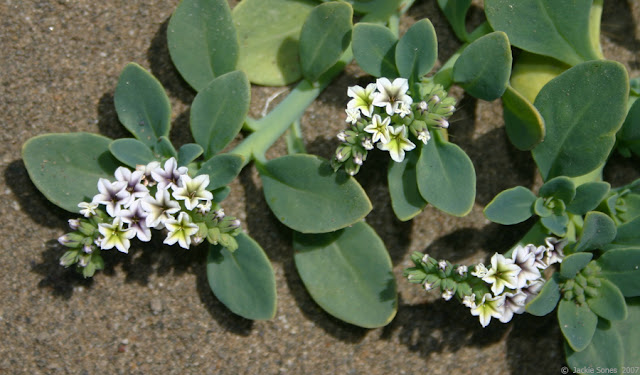Last night I showed a picture of doliolids washed up on Salmon Creek Beach:
I thought it would be valuable to document this event, and to illustrate what the doliolids looked like en masse on the sand because you might encounter them that way. However, I felt badly that the picture didn't provide a proper introduction to doliolids.
So here you go!
These animals were ~1 cm long. Doliolids are barrel-shaped with prominent muscle bands. (In doliolids the muscle bands completely encircle the animal, whereas in salps the muscle bands are incomplete.) They have openings at both ends —
water is drawn in through the oral siphon and expelled through the atrial siphon (see diagram below). The muscle bands are used for swimming, and for opening and closing the siphons.
Modified from Biology of the Invertebrates, 6th Edition by Pechenik (2009)
Doliolids are active filter-feeders, using a mucous net to capture small particles in the water.
Cilia on the pharynx generate a water current. As the water passes through the pharyngeal cavity, food is trapped on a mucous sheet (secreted by the endostyle) and then is rolled into a string and transferred to the mouth. The pharynx is also a site for gas exchange.
Here's another individual in which you can still see the pharynx (at the bottom of the picture):
I was intrigued by the structure of the pharynx, so I've included an even closer view where you can see the gill slits (the long, narrow openings in the pharynx):
Although many doliolids are tropical or semi-tropical, Dolioletta gegenbauri is a relatively cold-tolerant species. This species is found in northern California, but it's uncommon to see them near shore. They're open ocean animals, so finding them on the beach is rare (and fascinating!).

















































